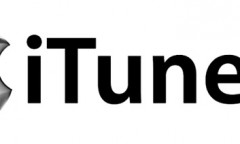By Jake Ke, | April 20, 2016

Azure Media Services announced that the company will now make use of some of the Microsoft's collection of cloud-based tools developed for its device learning services for video.
For several functions, including training of employees, engaging customers and many more, organizations and enterprises are welcoming video as the preferred medium. Undoubtedly, cloud computing is effective to stream, store and access large media files.
However, with the growth of companies, their video library must be equally effective for extracting new insights, as this enables personalized interactions with audiences and helps to take business to the next level.
Like Us on Facebook
Azure Media Services announced that the company will now make use of some of the Microsoft's collection of cloud-based tools developed for its device learning services for video. Thus, the company can now select interesting snippets automatically from a video source. This service is useful when one needs to provide a quick overview of what to expect in a long video.
In addition, Microsoft is constructing face detection into these tools. Thus, the company will be able to detect emotions of the people. Emotions like happiness, surprise, sadness, contempt, anger, fear, disgust and neutral etc. This service has many applications in the industry; for instance, aggregating and analyzing reactions of individuals attending an event.
For over 20 years of computer vision research, Microsoft Hyper-lapse is an exclusive result. The technology combines video stabilization and time lapsing to create beautiful, quick and consumable videos directly into Azure Media Services. The limit of 10,000 frames is removed now unlike it was there in free public preview.
Motion detection service is also included to detect motion in a video having stationery backgrounds. Video Optical Character Recognition and Content moderation services are available in private preview used to extract text displayed in the videos and to limit the manual effort involved in reviewing content respectively.
Other new features include an improved speech-to-text indexer with support for six languages (for a total of eight). English, French, Spanish, Italian, German, Portuguese, Chinese and Arabic are supported languages.
-
Use of Coronavirus Pandemic Drones Raises Privacy Concerns: Drones Spread Fear, Local Officials Say

-
Coronavirus Hampers The Delivery Of Lockheed Martin F-35 Stealth Fighters For 2020

-
Instagram Speeds Up Plans to Add Account Memorialization Feature Due to COVID-19 Deaths

-
NASA: Perseverance Plans to Bring 'Mars Rock' to Earth in 2031

-
600 Dead And 3,000 In The Hospital as Iranians Believed Drinking High-Concentrations of Alcohol Can Cure The Coronavirus

-
600 Dead And 3,000 In The Hospital as Iranians Believed Drinking High-Concentrations of Alcohol Can Cure The Coronavirus

-
COVID-19: Doctors, Nurses Use Virtual Reality to Learn New Skills in Treating Coronavirus Patients












